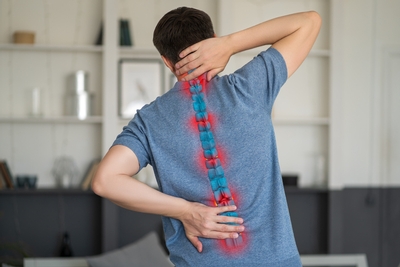Understanding the Connection: How Cervical Disc Herniation Causes Pain
Related Attorney: Timothy E. Dinan
November 15, 2023
Cervical disc herniation is a common source of neck and arm pain, and comprehending the link between the condition and the pain it generates can help individuals facing this issue. In this blog post, we'll explore the mechanisms behind cervical disc herniations and their impact on pain.
The Basics of Cervical Disc Herniation
Cervical disc herniation occurs when one of the discs in the neck's spinal column protrudes or ruptures. These discs act as shock absorbers and provide flexibility to the spine. A herniation happens when the inner, gel-like nucleus of the disc pushes through the outer layer, irritating nearby nerves.
Pain Generation in Cervical Disc Herniation
1. Nerve Compression - When the herniated disc material presses against nearby nerves in the cervical spine, it can lead to pain. The nerves in the neck control sensations in the arms, shoulders and hands. Compression or irritation of these nerves can cause pain that radiates down the arm on one or both sides.
2. Inflammation - The herniation process often triggers an inflammatory response in the body. This inflammation can irritate nerves further, intensifying pain. Swelling in the affected area can also contribute to discomfort.
3. Muscle Spasms - In response to the discomfort and nerve irritation, the surrounding muscles may go into spasm. These spasms can create additional pain and stiffness in the neck and shoulders.
4. Loss of Disc Height - As the disc herniates, it can lead to a reduction in the height of the disc space. This can cause changes in the alignment of the vertebrae and put additional stress on other structures in the neck, potentially leading to pain.
5. Radiating Pain - Pain from cervical disc herniation often radiates from the neck down the arm. The specific pattern of pain can vary depending on which disc is affected and which nerves are impacted.
6. Neurological Symptoms - In severe cases, cervical disc herniation can cause more than just pain. It may lead to tingling, numbness, or weakness in the arms, and can affect fine motor skills.
In summary, cervical disc herniation causes pain through a combination of nerve compression, inflammation, muscle spasms, changes in disc height, and the irritation of nearby structures. Understanding these mechanisms can help those experiencing this condition seek appropriate medical care and treatment to alleviate their discomfort and regain their quality of life.
Questions? Contact Tim Dinan at tdinan@lcrlaw.com, or (973) 729-1880.
See our previous blog post here.


















